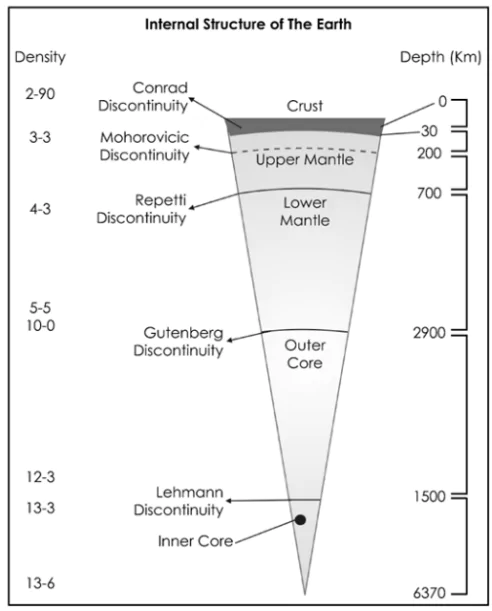![]() April 26, 2024
April 26, 2024
![]() 39
39
![]() 0
0
The structure of the Earth’s interior is made up of several concentric layers. The heat from the Earth’s formation and radioactive decay creates convection currents, driving movement in these layers. Earthquakes, volcanic activity, and magnetic field generation are all influenced by processes within the Earth’s interior. Temperature and pressure increase as we go deeper towards the centre of the Earth because of the presence of radioactive materials. Broadly, three layers can be identified:
 Oceanic Crust: Thinner than Continental Crust,
Oceanic Crust: Thinner than Continental Crust, | Must Read | |
| Current Affairs | Editorial Analysis |
| Upsc Notes | Upsc Blogs |
| NCERT Notes | Free Main Answer Writing |
Our understanding of Earth’s interior comes from both direct and indirect sources. Direct observations include surface rocks, volcanic eruptions, and deep drilling projects, while indirect methods involve analyzing seismic activity, gravitational anomalies, and magnetic surveys. Through these means, we’ve uncovered a layered structure, from the solid and brittle crust to the liquid outer core and solid inner core, providing insights into our planet’s dynamic and complex inner workings.
| Related Articles | |
| Earth’s Interior | Magnetic Fields Lines |
| Force and Pressure: Effects on Motion and Shape | INTERIOR OF THE EARTH |
<div class="new-fform">
</div>

Latest Comments